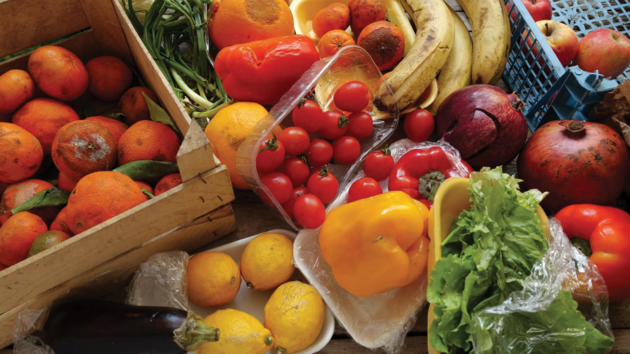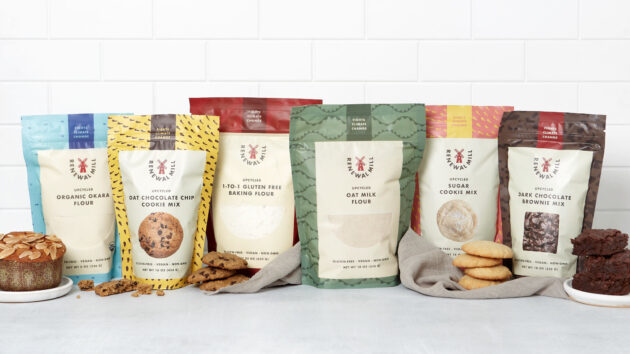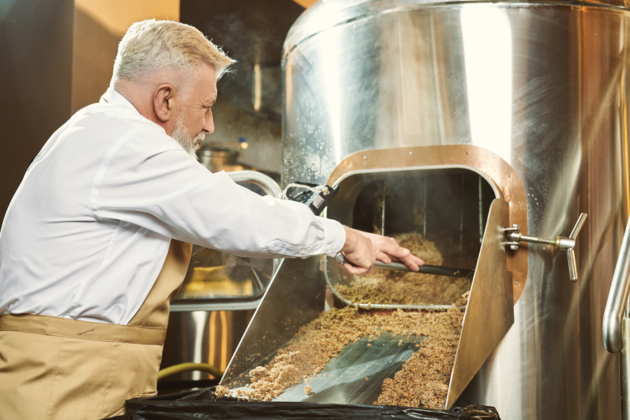
Mainstreaming food waste reduction with upcycling
By Mark Juhasz
Sustainability Editor pick food waste upcyclingUpcycling is gaining traction as processors work to create a circular food economy
 Greenhouse Juice Co upcycles discarded fruits and vegetables into juices. Photo © Fevziie / Adobe Stock
Greenhouse Juice Co upcycles discarded fruits and vegetables into juices. Photo © Fevziie / Adobe Stock Food waste is a huge problem once you become aware of it. It has significant impact on freshwater supplies and contributes to greenhouse gas emissions. According to FAO, about 30 per cent of all food is wasted at some point in the supply chain from source to consumer. Additional studies also state that about a third of all food is lost to waste. This translates to approximately a billion tonnes of food waste globally, or a trillion dollars’ worth, annually. Further, food waste exacerbates food scarcity and insecurity. In North America, a plethora of labelling confusion around food safety terminology and shelf-life considerations along with lack of diversion practices and purchase impulsiveness are contributing to massive amounts of food waste.
According to Project Drawdown, led by the U.S.-based Upcycled Food Association (UFA), food waste reduction can help minimize global warming and the effects of climate change. One waste-reduction approach that’s gaining favour is upcycling, as part of a broader circular economy.
What is upcycling
Upcycled foods do not have a solid definition other than ingredients that would otherwise have gone to waste, but find a new life, whether for human consumption or other positive uses. Co-ordination of effective food waste reduction strategies is often specific to each sub-sector in the supply chain, be it on-farm, in transit, or with consumer choices. Different business models, and experts focus are different aspects, whether that is preventing waste at the farm level, creating animal feed from discarded produce or energy from by-products, or upcycling into new food products such as juices and flours. It is important to see the bigger picture for the many opportunities, and to see the current enthusiasm for upcycling as the ‘branding’ of a much larger and longer consideration of effective resource management and responsibility.
Part of the branding and communications aspect to reducing food waste and promoting upcycling is the favourable market and consumer response to its initiatives. Clear communication of the benefits and value will be critical to uptake. According to New Food, only about 10 per cent of consumers are familiar with the term, upcycling, and the field may well be under researched. Different consumer segments will likely respond uniquely to product and service offerings to reducing waste, or to buying upcycled products or ingredients. Some shoppers are more motivated by frugality and cost savings, while others may be averse to new foods. Social and environmental messaging may also resonate strongly with some consumer segments, while others will have quality and food safety concerns. The definitions of food waste and upcycling have different meanings and implications, while not being completely new in context. For example, Toronto-based Second Harvest has for decades worked to redistribute food items to those in need, which would otherwise have gone to waste.

Renewal Mills offers a whole line of mixes and flours made using upcycled ingredients. Photo courtesy Renewal Mills
Certification
To give some structure and reliability to the specifics of upcycling in the food manufacturing space, UFA created in April 2021 the Upcycled Certified label. It is the first third-party verified certification mark that can be easily recognized by consumers. More than 200 certified companies with ambitions of reducing 1 billion lb of food waste annually over the next couple of years use this label.
As another step in building a food waste reduction infrastructure, the Food Waste Funder Circle has been created in the U.S. to manage the deal flow and logistics in the food industry. With consistent investment and support, analysts believe it will reduce food waste per year, while creating new food products and categories. Financing is coming from a combination of foundations, venture capital and philanthropy.

Lamb Weston plans to use pea starches to make batters. Photo courtesy Lamb Weston
Leading players
Amidst growing capacity and certification infrastructure, a new crop of companies is gaining recognition. Brooklyn Bouillon makes broth from what was ordinarily discarded animal bones. Renewal Mills intends to become the go-to source for upcycled ingredients, and continues to add mixes, flours and beyond to their portfolio. Lamb Weston intends to use pea starches (from the growing pea processing industry in North America) as an alternative batter ingredient. Greenhouse Juice is making new beverages by reusing discarded fruits and vegetables. Companies like GroundUp Eco Ventures, Wellington Brewery, and ReGrained are working with either beer or coffee brewers to collect their spent grains and grinds and gave them new life as nutritious, minimally processed products, flours, baking mixes, livestock feed, or as raw ingredients for fermentation processing (as in the case of Mushlabs partnership with a German brewer).
Retailers are being offered new products apart from upcycled feedstock for food and beverage manufacturers. Misfits Market is a food upcycling delivery app that aligns grocery shoppers with foods nearing expiration. Users of the app can expect 20 to 50 per cent savings on their orders, while Chicago-based Hazel Technologies has created a sachet that uses ethylene to control the aging process of fresh product and extend its shelf life. These offerings help food-focused companies mitigate the fluctuations and inflation currently impacting costs.

A growing number of companies are converting spent grain, a by-product from brewing beer, into flours and baking mixes. Photo © serhiibobyk / Adobe Stock
Consumer awareness
Amidst all these initiatives and pressures leading food waste awareness and a new circular economics, the verdict is still out on consumer willingness to pay for upcycled food products. Whether it is environmental messaging, climate change and impact that will resonate with some consumers, or the rationality of cost savings and frugality with others, communications will be an important consideration for food brands in this space. The conversation will also look quite different depending on the target market (e.g. farmer, input supplier, manufacturer, ingredients company, retailer or consumer). Experts and engineers alike seem confident agri-food waste could produce massive amounts of useful side-streams. Some applications are more fully realized, such as anaerobic digestion of cattle manure, or feedstock from spent grains. It also begs to mention that reducing food waste is not a totally new concept when considering the origins of sausages, hot dogs, soup stocks and pet foods.
With its message of frugality, circularity, and careful use of resources, upcycling will resonate with the broader public and consumers, companies, and governments alike. However, large food companies and major CPGs remain slow to get on board amidst concerns with supply consistency and quality control. This will require greater co-ordination, and the Food Waste Funder Circle is a step in the right direction. Depending on how one defines it, upcycling, reducing (food) waste, and circularity are here to stay, and they can increasingly make good business sense. Also, upcycling has been identified by several market analysts as a leading trend for 2022.
Mark Juhasz is CEO and founder of Harvest Insights. He has more than 20 years of experience in the agri-food industry. He can be reached at www.harvestinsights.com.
This article was originally published in the August/September 2022 issue of Food in Canada.
Print this page